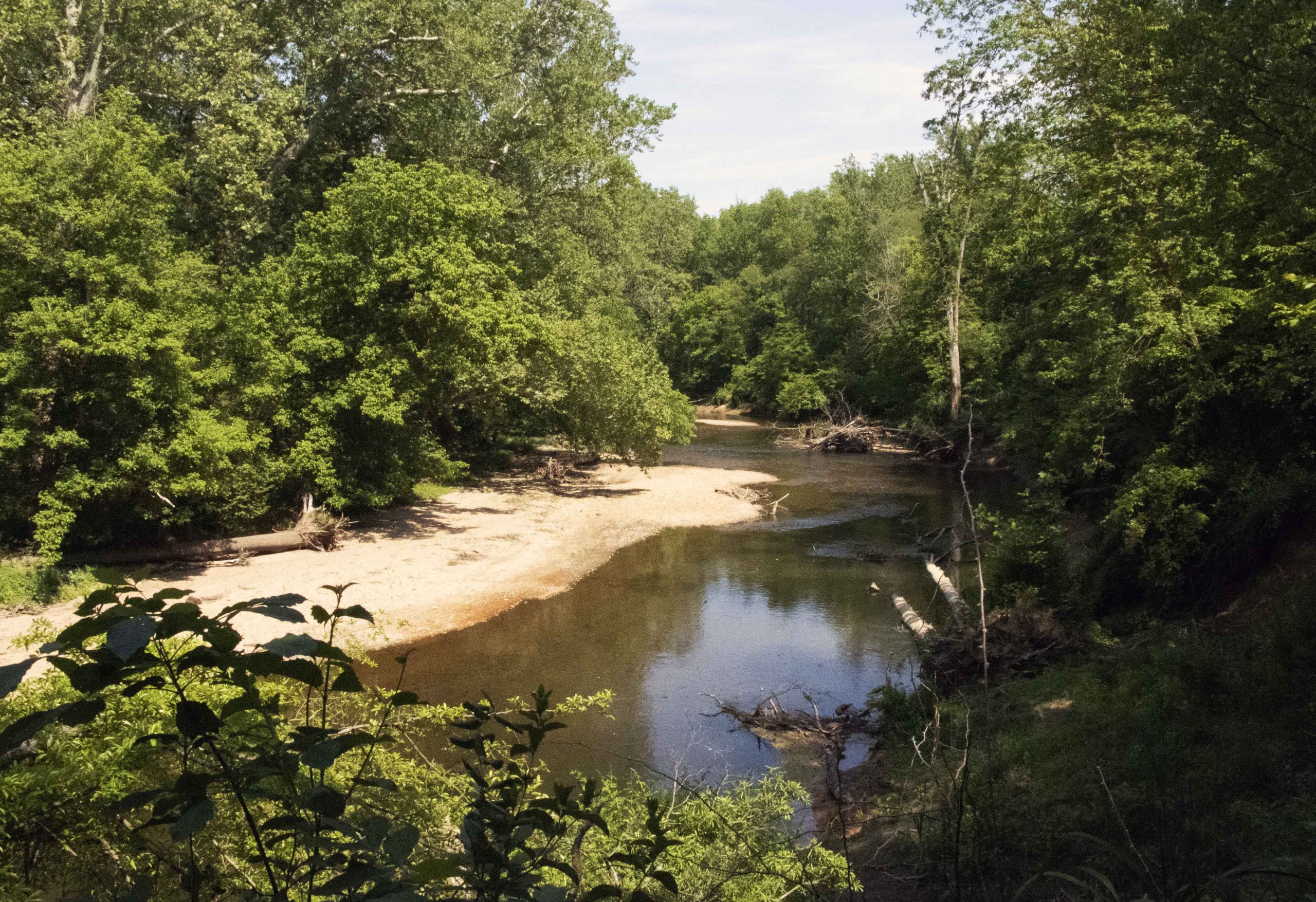The 85-year-old Patuxent Wildlife Refuge outside Washington is the only federal refuge that conducts wildlife research while also providing a 12,841-acre home to hundreds of species, including threatened species such as the Northern long-eared bat and the spotted turtle.
“Where we’re located, our size, that is everything,” said Sandy Spencer, supervisory biologist for the Patuxent Research Refuge. “That means so much, not just to the bats, but to a lot of wildlife that lives here.”
Sam Droege, a veteran biologist and entomologist who has been working in the area for over 40 years, calls the refuge “a concentrated center of biodiversity.”
“In the bigger picture, it’s the last large protected (land) between Baltimore and Washington,” said Droege.
However, the refuge faces a potential threat: a high-speed magnetic levitation train (commonly referred to as a Maglev train) is in the planning stages to connect Washington and Baltimore, and eventually run up the Northeast Corridor.
Northeast Maglev, the company that wants to introduce Maglev trains in the United States, said the Washington-Baltimore train would reduce carbon emissions by eliminating millions of car trips between the two cities. But environmentalists are concerned that construction of the train – with one proposed route going through the northern edge of the refuge — could irreversibly damage to the refuge and its species.
“Whether this is a good project for the nation or not, this is the wrong place to be building it,” said Richard Dolesh, chair of the Friends of Patuxent, a nonprofit that supports the Patuxent Wildlife Research Refuge through fundraising.
The first fully commercial Maglev train debuted in Shanghai in 2004, according to the Department of Energy. In Japan, a train is expected to be ready by to take passengers from Tokyo to Nagoya.
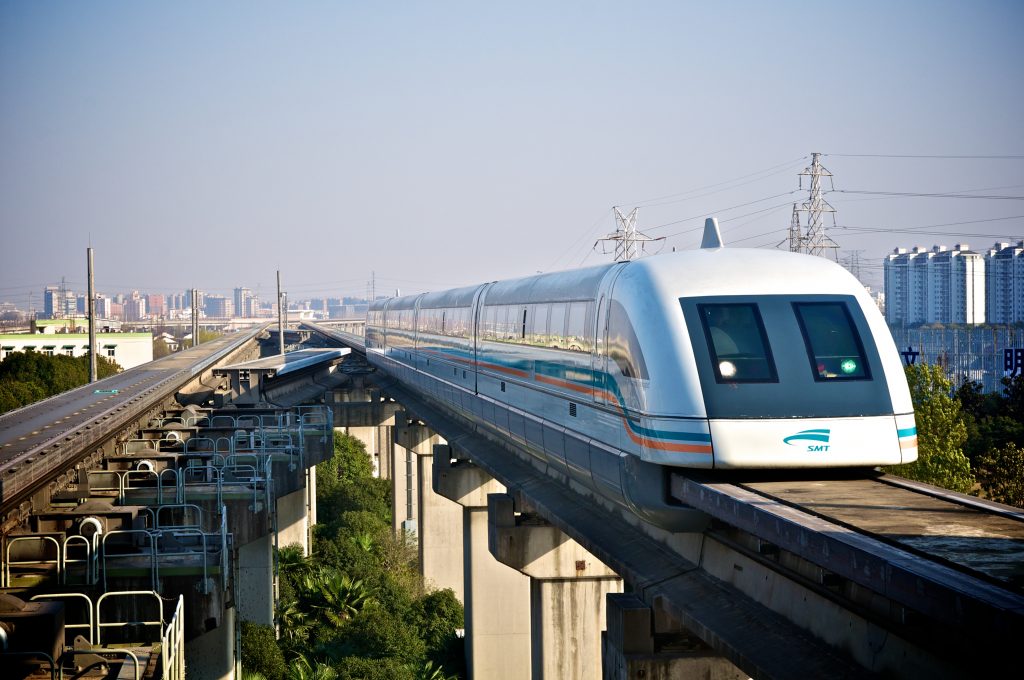
In 2001, Congress passed the Transportation Equity Act for the 21st Century, which included funds for the Maglev Deployment Program. Two proposals – for the Baltimore to Washington Maglev line and another in Pittsburgh — were selected for further evaluation. In 2003, a Maglev train proposal was developed in Maryland, but the state dropped the project.
Interest in the Maglev project was reinvigorated after Maryland Gov. Larry Hogan, a Republican, visited Yamanashi, Japan in 2015 and rode a 27-mile test track for the future Tokyo-Nagoya line.
“Exploring this new Maglev technology between Baltimore and Washington represents a huge transportation and economic development opportunity for Maryland,” said Hogan in a statement on the state Department of Transportation website at the time.
Maglev trains run at speeds of over 300 miles per hour. Using forces of propulsion and magnetism, the Maglev trains use the basic principles of magnetism (opposites attract, similarities repel) to levitate on the tracks. The trains have magnets on the sides of the train known as superconductive magnets that rely on this factor of push and pull to “levitate” across the tracks.
The trains are considered by supporters as the transportation of the future. However, environmental activists are concerned about the amount of energy required to power the train as well as the damage to the refuge should the train run through it.
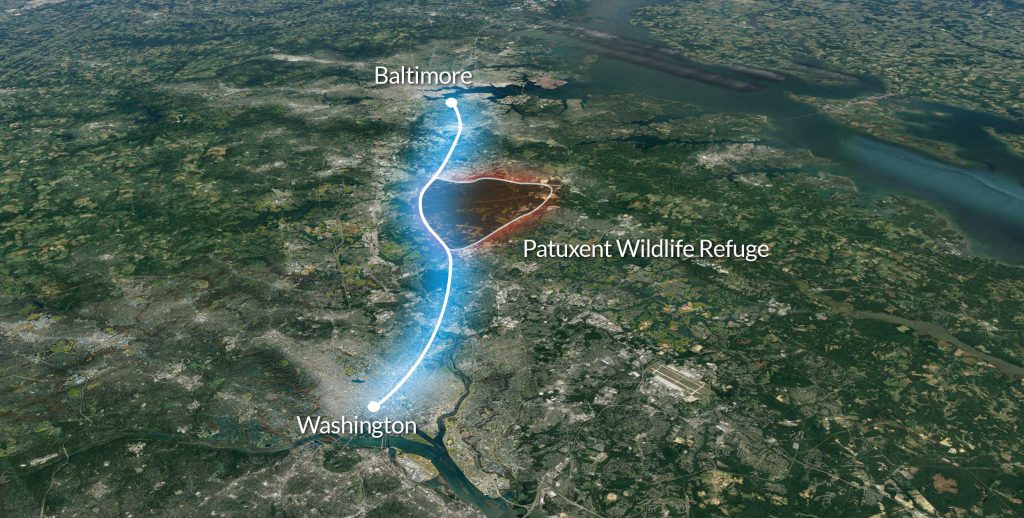
Hogan got a $27.8 million grant from the Federal Railroad Administration in 2016 to prepare a draft environmental impact statement, which is required by the National Environmental Protection Act.
It was released for public comment in January and showed the potential routes of the train, outlined potential costs and identified areas that could be impacted by the construction of the train.
On May 24, the public comment window closed. FRA, the Maryland Department of Transportation and the Maryland Economic Development Corporation now are drafting a final environmental impact statement, estimated for completion in spring 2022.
Craig Gordon, a spokesman for Northeast Maglev, said that the cost of the train cannot be finalized until a route is chosen, but it will be financed through federal infrastructure loans and private investments. In addition, Japanese government has offered to provide funding in the form of “low- interest loans to help with the construction cost for the first leg of the project.”
He also said the company is “concerned with the threat of any habitat destruction and (has) worked to minimize the footprint of our infrastructure to the greatest extent possible – and will continue to do so as more advanced levels of project engineering occur.”
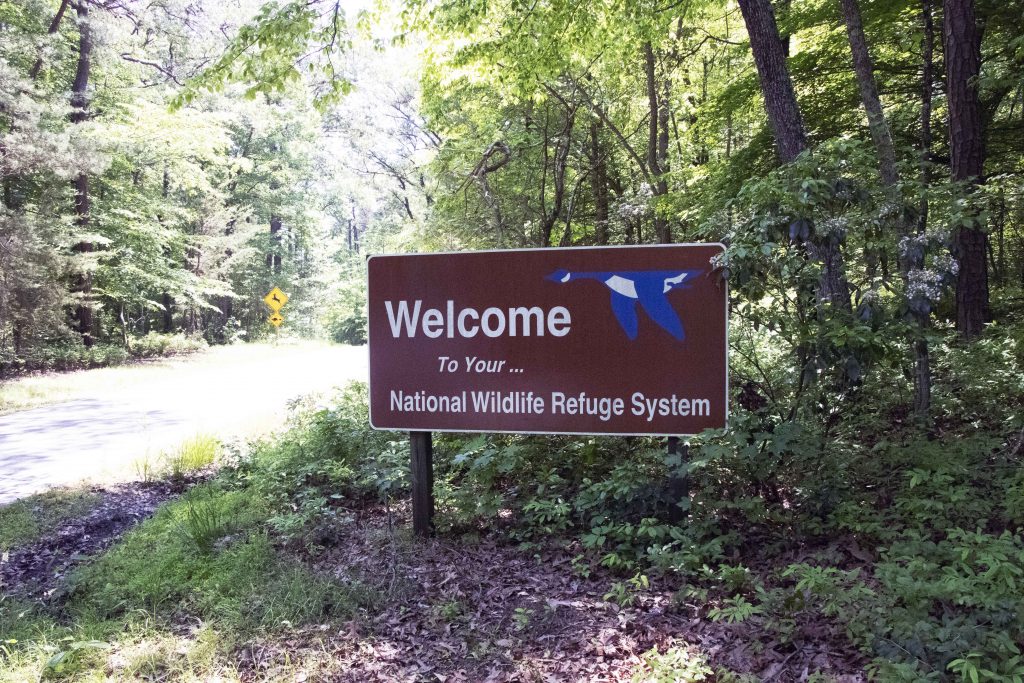
Refuge workers don’t comment on the whether the train should be built, but know the risks of disrupting the refuge’s habitat.
“If you look at the diversity that we have, it would all have to go somewhere,” said Jason Cangelosi, visitor services manager at the Patuxent Wildlife Research Refuge.
Diana Ogilve, a park ranger and volunteer coordinator at the refuge, said wildlife cannot always be relocated.
“The thing about any kind of species collapsing is everything is connected,” said Ogilve. “If one thing collapses, it affects everything else. And so if we lose one species, it could spell doom for many more species that depend on that species, either as prey or predator.”
Jeffries Bolden, one of the park rangers on the North Tract of the refuge, said refuge volunteers worry that it may not last another 50 years because of societal pressures to develop the area.
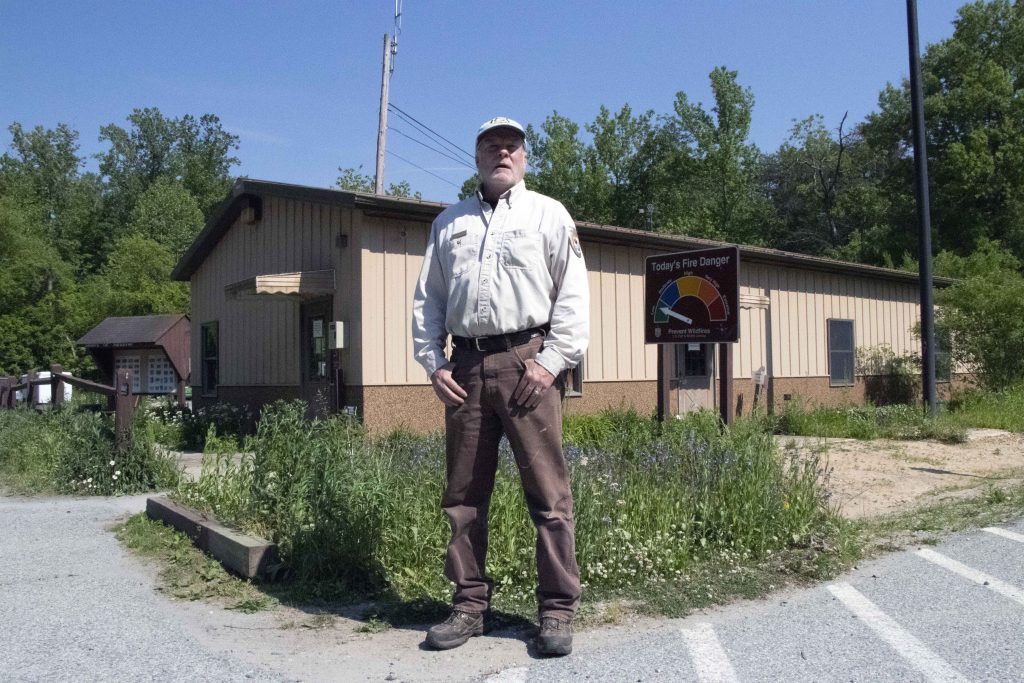
Jerry L. Burgess, director of the environmental science and policy master’s program at Johns Hopkins University, said that he would not want to see the habitats of the refuge’s various species removed because “we’re losing species almost faster than we can count them.”
Lindsey Mendelson, transportation representative for the Sierra Club’s Maryland Chapter, said the Sierra Club supports the development of smarter infrastructure but calls the train “questionable.”
“There’s a lot of excavation that they have to do,” said Mendelson.
Kyle Hart, mid-Atlantic field representative for the National Parks Conservation Association, said the region already has lost a lot of undeveloped land, including forests and wetlands.
“It’s not a mystery that in this region, habitat that is good for animals and plants and is not already subdivisions, shopping malls, and the like, is few and far between,” said Hart.
Northeast Maglev believes the train will reduce the number of cars on the road by 12% to 15% according to CEO Wayne Rodgers’ testimony at a hearing of the House Committee on Transportation.
But Lewis Fulton, director of the Sustainable Transportation, Energy Placement at University of California, Davis said that train projects like the Maglev could increase the carbon footprint of the United States. “The faster the train, and the more new track you have to lay, the more carbon footprint you’re going to have.”
“It all comes down to whether the extra speed is worth the cost, the additional energy use, and any other regional impacts that that it could have,” said Fulton.
A presentation by the National Capital Planning Commission, a federal agency responsible for federal land use planning in Washington and its Maryland and Virginia suburbs, said that “potential environmental impacts appear to be significant,” especially to wetlands, ecological resources and parlands. It also said that the magnitude of the construction, while having potential to be less impactful on the region, would “likely make it impossible to fully mitigate in a meaningful manner.”
House Majority Leader Steny Hoyer, whose congressional district includes the refuge, said that “preserving Maryland’s natural resources and taking important steps to curb carbon pollution and protect our environment remain among my top priorities in Congress.”
Maryland Sen. Chris Van Hollen, a Democrat, said there are many unanswered questions about the Maglev project ranging from impacts to the community to concerns about the environment.
“This project cannot and should not proceed without a thorough examination of these and other matters, which is why I pushed to extend the public comment period on it,” said Van Hollen.
But Droege, the biologist, said that he is concerned that projects like the Maglev train will be the start of more projects on federal land that could lead to even more environmental destruction.
“Each time you remove from that pool of natural landscapes, your capacity to retain all that biodiversity in the bank is definitely less,” he said.
